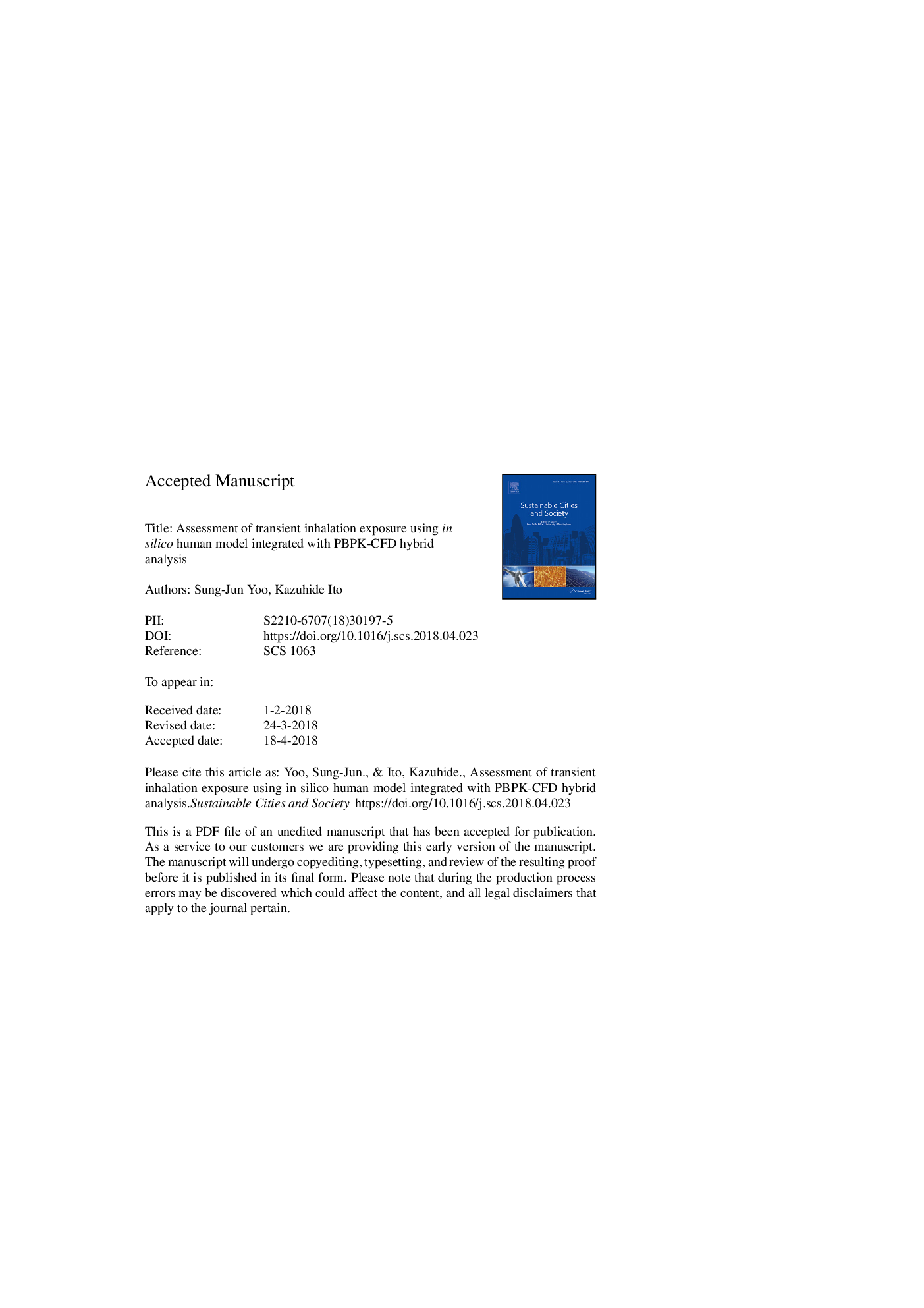| Article ID | Journal | Published Year | Pages | File Type |
|---|---|---|---|---|
| 6775109 | Sustainable Cities and Society | 2018 | 24 Pages |
Abstract
This study presents a numerical assessment of transient tissue dosimetry in respiratory tracts using an in silico human model, i.e., computer simulated person (CSP). In this study, we employed a newly developed CSP, which integrated the actual shape of the human body geometry with a virtual airway reproduced realistic human respiratory tract. In addition, physiologically-based pharmacokinetic (PBPK)-computational fluid dynamics (CFD) hybrid analysis was integrated into the CSP-based numerical simulation to estimate inhalation exposure and respiratory tissue dosimetry with the unsteady breathing cycle model. In order to discuss the applicability of PBPK-CFD-CSP hybrid analysis for inhalation exposure assessment in indoor environments, inhalation exposure under transient conditions was quantitatively analyzed with a model validation. As a result, heterogeneous and transient contaminant concentration in indoor spaces, and time-dependent inhaled formaldehyde concentration including adsorption distributions, i.e., heterogeneous tissue dosimetry in the respiratory tract were precisely analyzed. Over the 50% of inhaled formaldehyde was confirmed to be adsorbed on the epitheliumâ¯+â¯mucus layer of the nasal cavity and reacted/decomposed at this layer under the influence of the saturable metabolism. A discrete and local “hot spot” was also confirmed at the pharynx and larynx in accordance with the complicated flow pattern in the respiratory tract.
Related Topics
Physical Sciences and Engineering
Energy
Renewable Energy, Sustainability and the Environment
Authors
Sung-Jun Yoo, Kazuhide Ito,
